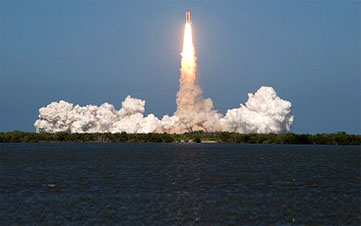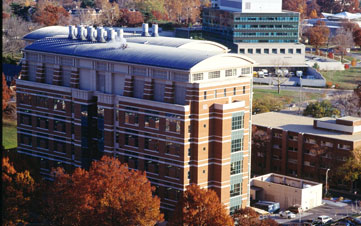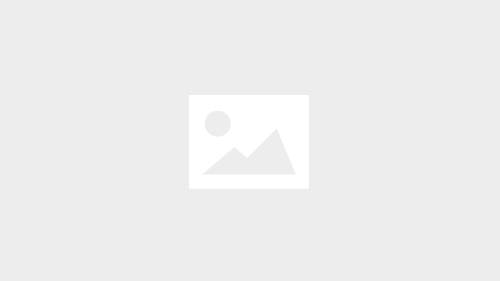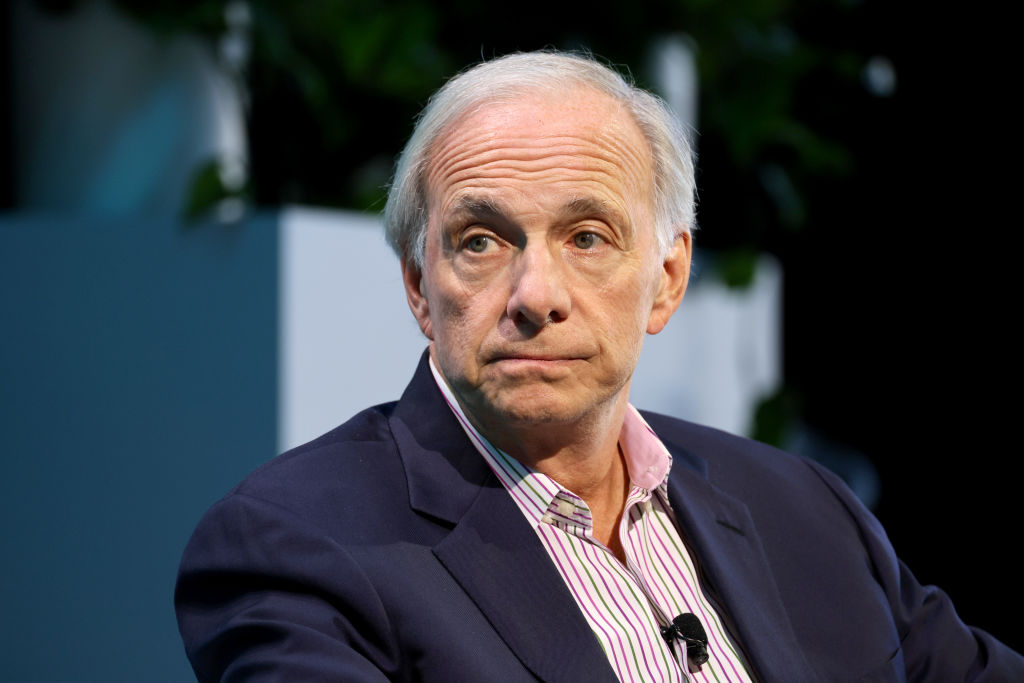5 Potential Economic Powerhouses of Tomorrow
Even as the national economy struggles, some regions anticipate future prosperity.

Even as the national economy struggles, some regions anticipate future prosperity. Though unlikely to surpass powerhouses of the U.S. economy such as California’s Silicon Valley, Boston’s Route 128 corridor and North Carolina’s Research Triangle, they may well give better-known up-and-comers such as Austin, Tex., Charlotte, N.C., and Denver, Colo. a run for the money.
Consider these five examples of how areas are leveraging their strengths for future growth and betting on industries that are poised for takeoff.

North Dakota's Oilpatch Boom
Energy is North Dakota’s ticket to success. High oil prices and the development of technologies to unlock previously unreachable oil and gas reserves are rocketing the Peace Garden State to the fastest pace of gross domestic product growth and the lowest unemployment rate in the nation. About 26,000 new oil wells are in the blueprint for the next 25 years. That’ll fuel five to seven years of very swift growth and sustain the state’s economy for two decades. What’s more, even if oil prices drop by 50%, low exploration costs and proven supplies will keep the state producing.
To help keep growth on track, North Dakota has a fairly hands-off regulatory attitude, and state policymakers are mulling ways to simplify taxes on the state’s oil industry.

Portland, Ore.: Hip, Smart, Green
Rose City is betting on its appeal to a young creative class of workers to build a 21st-century clean economy. Portland expects its workforce to grow by 2.4% a year over the next decade—six times as fast as the U.S. average rate. What’s more, the number of 25- to 34-year-olds there grew 12% from 1990 to 2000. Across the U.S., that age group shrank 8%. A third of Portland’s young adults have college degrees.
The city already has a strong technology bent. It’s home to large operations for Intel and Hewlett-Packard, 40-odd solar power firms and two big wind energy firms. Oregon is also nurturing more clean tech—green construction, ocean energy and nanotechnology. The Oregon Nanoscience and Microtechnologies Institute has helped 22 nanotech start-ups raise $96 million. The Oregon Wave Energy Trust aims to make the state a clean energy leader, eventually generating 500 megawatts of electricity and thousands of jobs with technology to harness the oceans’ wave power.

Maryland: Bioscience Central
Maryland is investing in bioscience research and development. Nurtured by a slew of laboratories within its borders, including those for the U.S. Departments of Agriculture, Commerce, Defense and Homeland Security, the National Institutes of Health and Johns Hopkins University, the state enjoys a 44% greater concentration of bioscience talent than the national average.
Under Gov. Martin O'Malley's BioMaryland 2020 strategy, the state plans to bolster the sector with more private investment and increased commercialization of basic R&D work. It’s sinking $1.3 billion into programs over 10 years. Notably, even in these tight times, Maryland is forging ahead, raising its biotech tax credit and approving the InvestMaryland plan, which provides tax credits to insurance companies for investing in the Maryland Venture Fund.

Minneapolis-St. Paul: Exporting Technology
Export know-how and medical technology are the edge for the Twin Cities. Despite a reputation as being unfriendly to business, the region has a lot going for it: An educated workforce (nearly 38% have a college degree). A patent rate that’s double that of the U.S. as a whole. And 21 Fortune 500 firms that call the region home. Among the area’s business initiatives is the Entrepreneurship Accelerator. Funded by nonprofits and local government, the multimillion-dollar, 10-year project is committed to financing about 50 start-ups.
Working with the Brookings Institution, metro planners are also crafting an export strategy to capitalize on the area's strong base of medical device companies and industry collaboration with the Mayo Clinic. As ever more miniature devices to deliver therapies via cells are developed, the area is well positioned to grow from its current rank as 15th-largest exporter among cities.

Ohio's Manufacturing Revival
Ohio is hitching its wagon to advanced manufacturing. The Buckeye State aims to retool its ailing old-school industries to produce 21st-century technologies, replicating in a variety of venues the transition that Toledo glassmaker Pilkington North America made to photovoltaic materials. One of Ohio’s long-term bets: Flexible electronics—circuits imprinted on polymer films—parlaying expertise developed at Kent State University.
To help with the transition and boost job creation, Gov. John Kasich (R) has recruited a Silicon Valley venture capitalist to head JobsOhio, a nonprofit group run by government appointees and financed by the lease of Ohio’s liquor franchise.

More from Kiplinger
SLIDE SHOW: 11 Comeback Cities for 2011
SLIDE SHOW: 8 Emerging U.S. Gateways for Immigrants
Get Kiplinger Today newsletter — free
Profit and prosper with the best of Kiplinger's advice on investing, taxes, retirement, personal finance and much more. Delivered daily. Enter your email in the box and click Sign Me Up.
-
 Ray Dalio Is Ringing Alarm Bells About 'Something Worse Than a Recession'
Ray Dalio Is Ringing Alarm Bells About 'Something Worse Than a Recession'Bridgewater founder Ray Dalio has been sounding off about his concerns for the global economy as a result of tariffs and certain policies, as well as other factors.
By Alexandra Svokos
-
 Who Pays the Most Taxes in the U.S.? Tax Burden by Age
Who Pays the Most Taxes in the U.S.? Tax Burden by AgeTax Burden Polls show that most people feel like taxes are unfair. But which age group bears the brunt of the tax burden in the United States?
By Kelley R. Taylor
-
 The AI Doctor Coming to Read Your Test Results
The AI Doctor Coming to Read Your Test ResultsThe Kiplinger Letter There’s big opportunity for AI tools that analyze CAT scans, MRIs and other medical images. But there are also big challenges that human clinicians and tech companies will have to overcome.
By John Miley
-
 The New Space Age Takes Off
The New Space Age Takes OffThe Kiplinger Letter From fast broadband to SOS texting, space has never been more embedded in peoples’ lives. The future is even more exciting for rockets, satellites and emerging space tech.
By John Miley
-
 Rising AI Demand Stokes Undersea Investments
Rising AI Demand Stokes Undersea InvestmentsThe Kiplinger Letter As demand soars for AI, there’s a need to transport huge amounts of data across oceans. Tech giants have big plans for new submarine cables, including the longest ever.
By John Miley
-
 What DOGE is Doing Now
What DOGE is Doing NowThe Kiplinger Letter As Musk's DOGE pursues its ambitious agenda, uncertainty and legal challenges are mounting — causing frustration for Trump.
By Matthew Housiaux
-
 A Move Away From Free Trade
A Move Away From Free TradeThe Letter President Trump says long-term gain will be worth short-term pain, but the pain could be significant this year.
By David Payne
-
 Trump’s Whirlwind Month of Crypto Moves
Trump’s Whirlwind Month of Crypto MovesThe Kiplinger Letter The Trump administration wants to strengthen U.S. leadership in the cryptocurrency industry by providing regulatory clarity.
By Rodrigo Sermeño
-
 Donald Trump Tests His Limits
Donald Trump Tests His LimitsThe Kiplinger Letter President Encounters Legal Obstacles in Pursuit of Ambitious Agenda.
By Matthew Housiaux
-
 Another Down Year for Agriculture
Another Down Year for AgricultureThe Kiplinger Letter Farmers brace for falling incomes, widening trade deficits
By Matthew Housiaux
